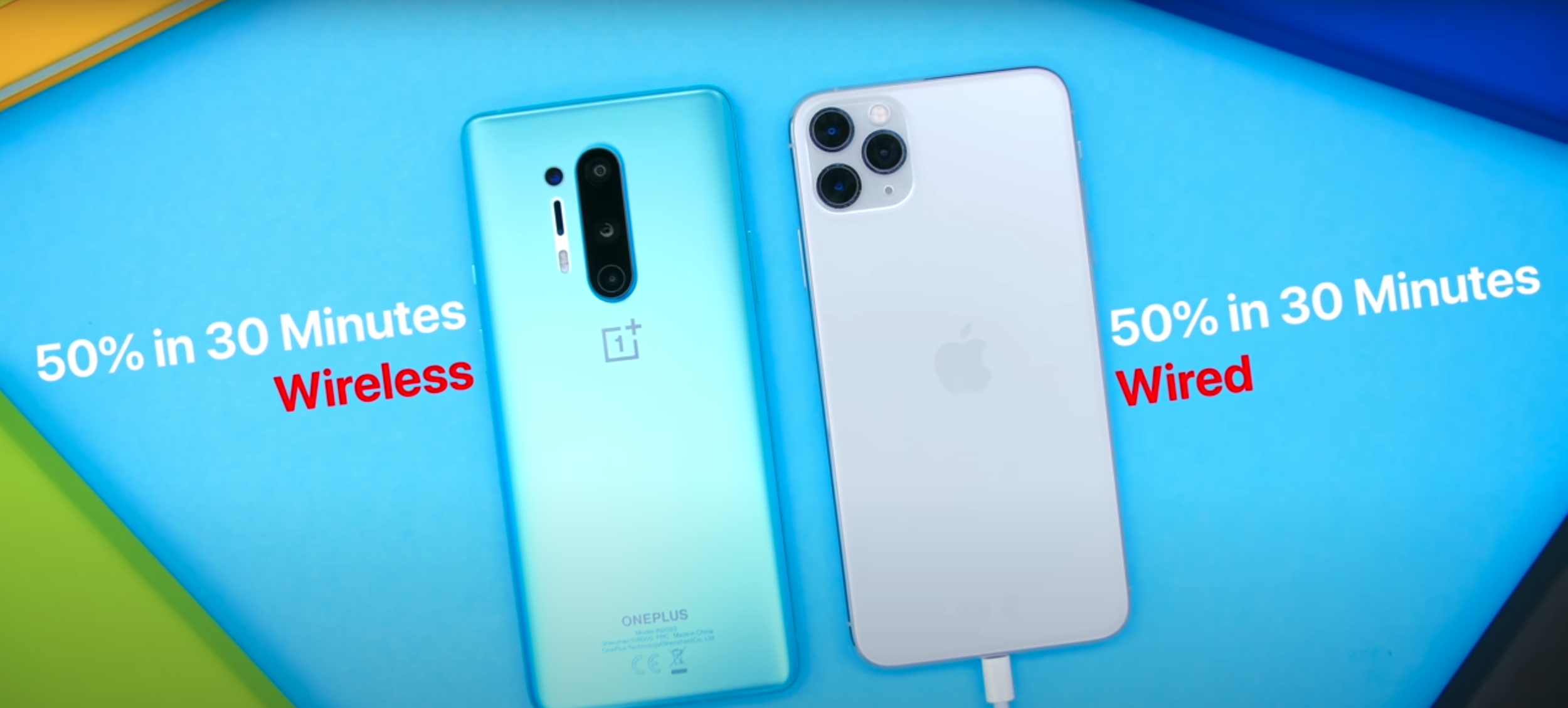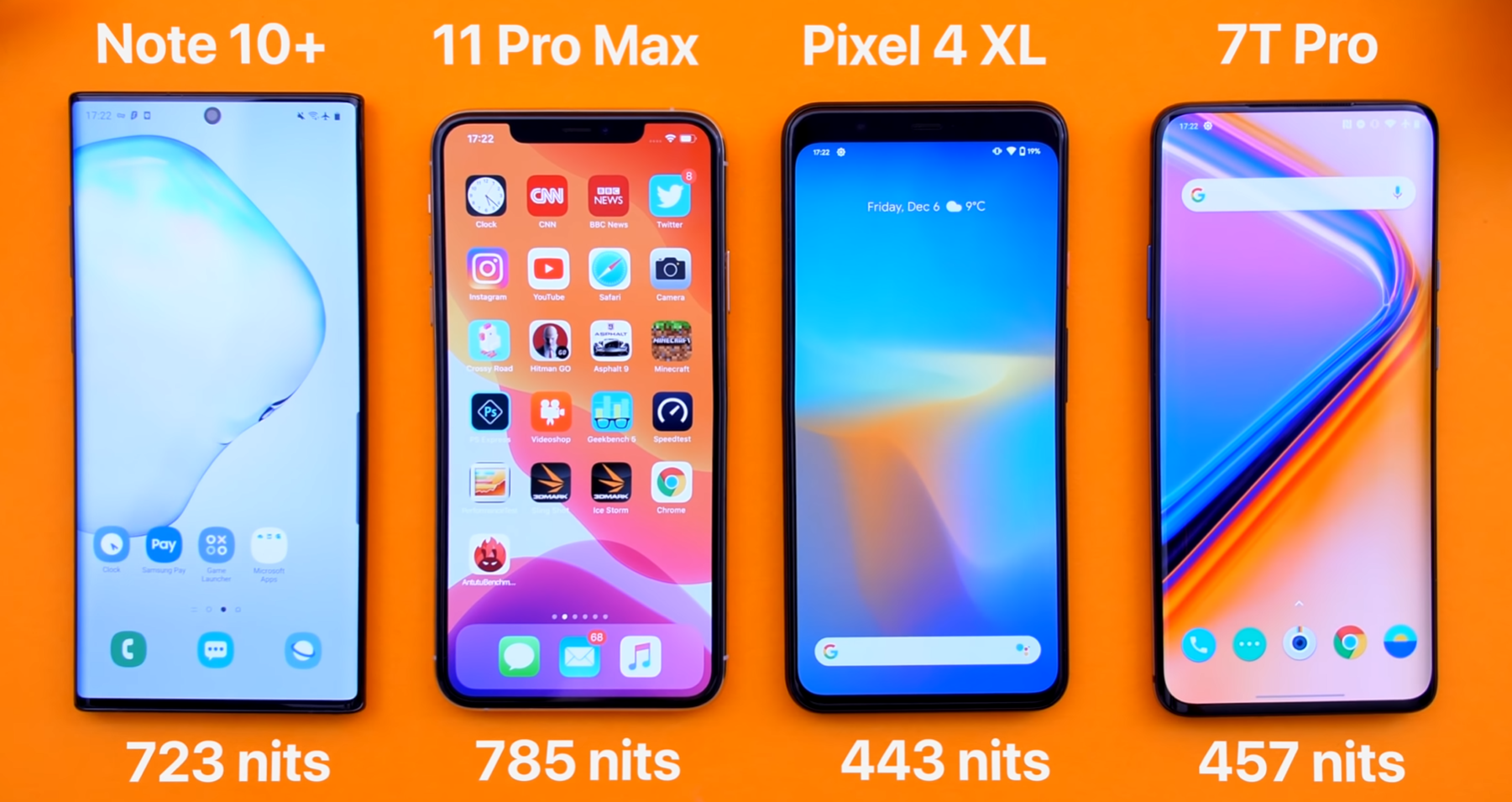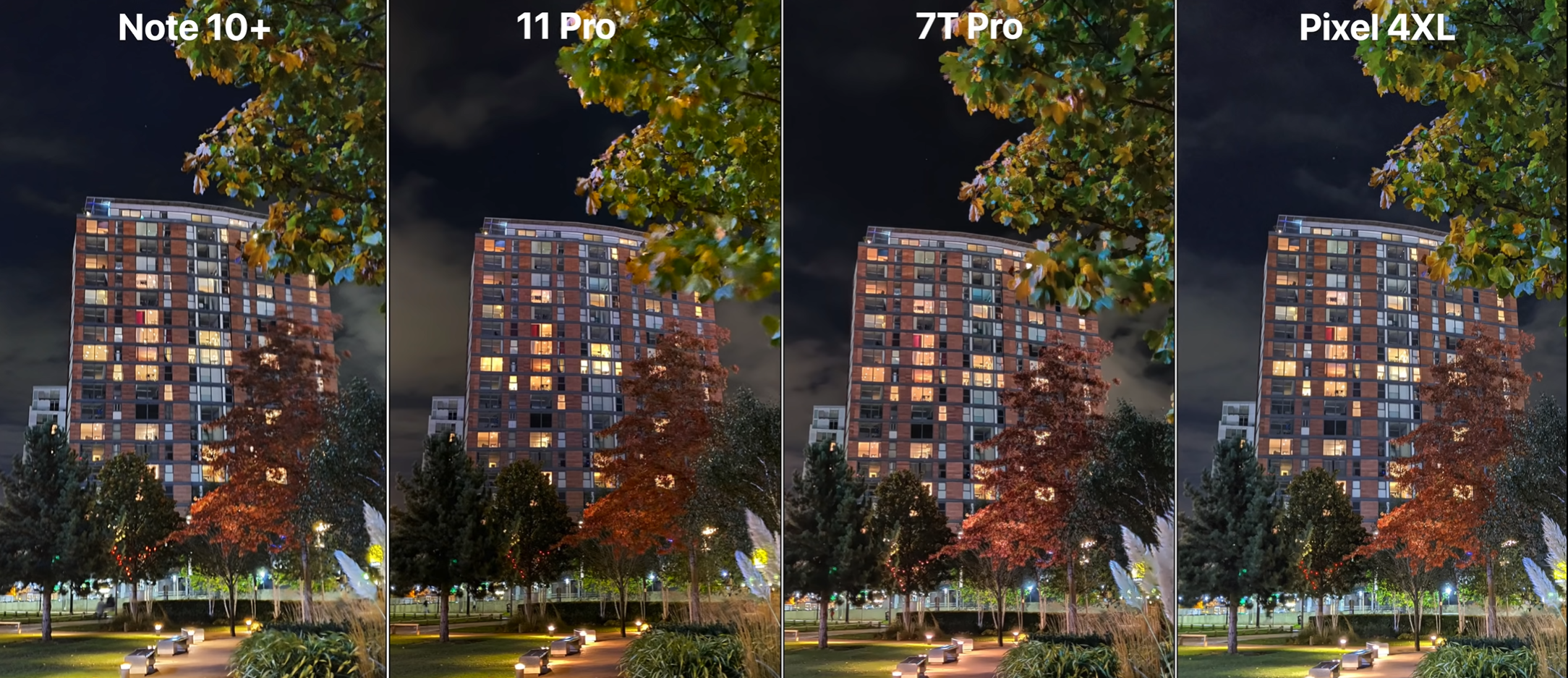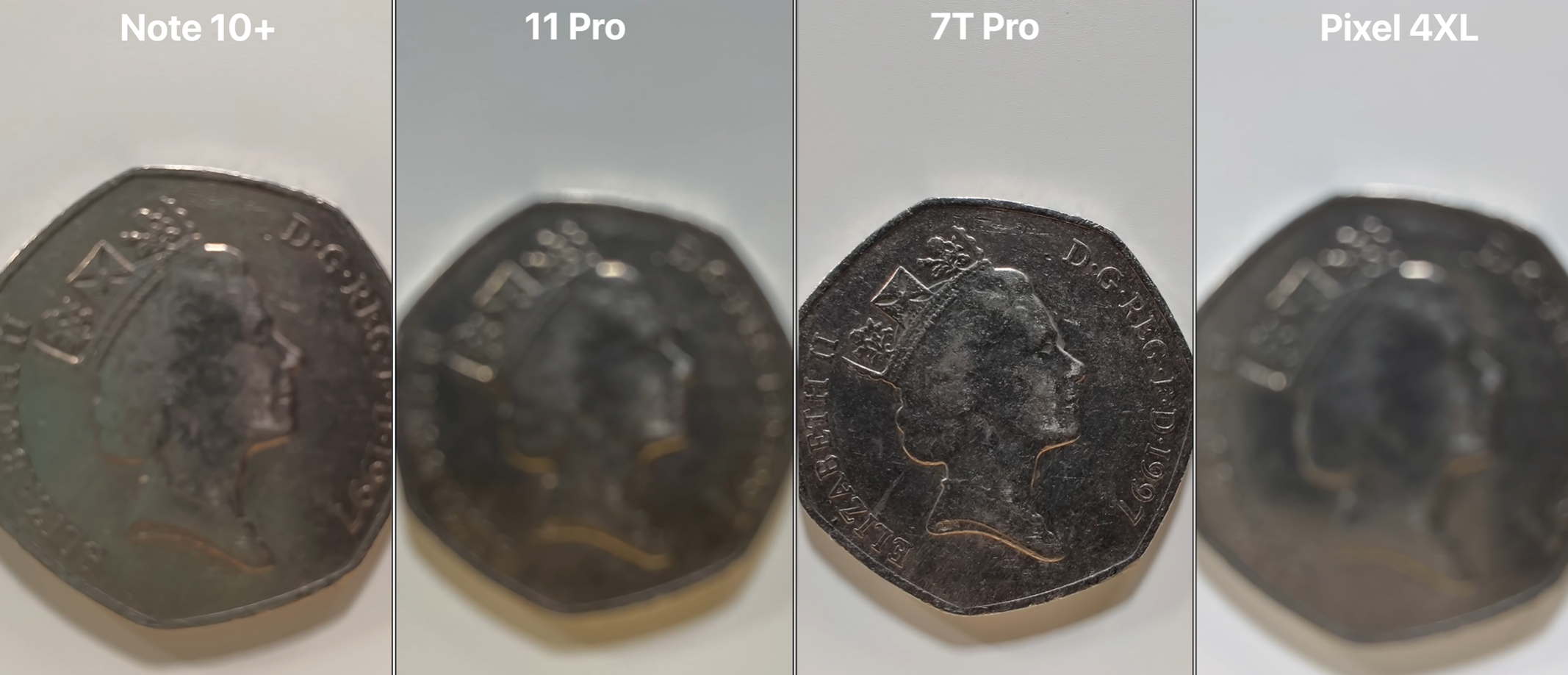The OnePlus 8 and the OnePlus 8 Pro are finally here. In case you’ve missed it, we also uploaded my live unboxing with both the OnePlus 8 and the 8 Pro’s Review Kits. This was a bit of a special unboxing because it was quite different to what you would get when you buy the phone. We got sent quite a few more things, so if you haven’t seen that video, I highly recommend watching it!
But now that I’ve spent a bit more time with these Smartphones, I’m more comfortable giving you guys my first impressions. This is not my Full Review, I need a few more weeks with them for that. But nonetheless, I do have a lot to say about both of these so, enjoy my honest first impressions.
Since I’m not fully sure if we’ll get the chance to do a Full Review, as we do have to send these back very soon, I have split this video into the same usual categories as the Full Review, but do keep in mind that some sections do require more testing. With that being said, I’ll be covering the Design, Display, Camera, Performance, Special Features, Battery & Value.
Design
Starting off with the design, same as with the OnePlus 7 and the 7T series, we get two models, the OnePlus 8 and the OnePlus 8 Pro. From the back, they both look almost identical to the 7 Pro and the 7T Pro from last year. The regular 7 and 7T did have a different Camera Module arrangement but now they both have it in the middle to make them look more similar, they look great.
This generation of OnePlus Smartphones have lost that signature Full-Screen Display.
We do get some new colours. In the UK, the get a new Glacial Green colour, which I personally really love. I was a big fan of the Nebula Blue colour on the 7 Pro, but I wasn’t that big of a fan of the Blue on the 7T Pro. This new Glacial Green colour is almost in between Green and Blue. It’s got that turquoise colour to it, but don’t ask me because I’m colourblind. We still have a Frosted Glass back which means that, compared to Smartphones such as the Galaxy S20’s, they will leave almost no smudges or fingerprints on the back.
We have a Matte Aluminium Frame surrounding the Phone as well as a SIM Slot, USB C Port and a Speaker on the bottom, so no Headphone Jack at all. We get the Volume Button on the left, the Power Button on the right, as well as OnePlus’s iconic Mute Switch, and finally on the top we get a Microphone Port. For some reason, the top of the 8 Pro has a strange indentation, I’m not sure why they’ve done that, I’m definitely not a big fan of it but at least that’s one difference between the two.
The colour that you get is now specific to the specs that you get. So, if you get the higher-end models with 12GB of RAM and 256GB of Storage, those will both come in the new Glacial Green colour, whereas if you buy the standard 8GB of RAM with 128GB of Storage model, those would both come in Black.
Taking a look at the front, this is where the big changes are. We no longer get a Full-Screen Display so unfortunately, no more pop-up Camera Module this time. We now have an In-Display Camera Module, just like on many other Smartphones now. For me, this is a step backwards. I mean sure, we do get slightly thinner Bezels, especially on the sides, but having no Notch or Camera Cutout was one of the most unique things about the OnePlus 7 Pro & 7T Pro. That now seems to be gone entirely with the 8 Pro.
I do like the fact that both the 8 and the 8 Pro have pretty much the same design though, they’re also both thinner and lighter than the 7T models from last year. The regular 8 is now 8mm thin and weighs 180g, compared to the 8.1mm and 190g of the 7T. The 8 Pro is now 8.5mm thin and 199g, compared with the 8.8mm and 206g of the 7T Pro. But since they both have this tapered edge design, they will actually feel much thinner than they are.
Display
Moving on to the Display, the regular 8 comes with a 6.55” Display, exactly the same size as the 7T’s Display from last year. The 8 Pro now comes with a larger 6.78” Display, compared to the 6.78” Display that we got with the 7 Pro and 7T Pro, last year.
In terms of Resolution, we get a 2400x1080p Display on the regular 8 and a 3168x1440p Display on the 8 Pro. This translates to 402 PPI on the regular 8 and 513 on the 8 Pro. At that PPI you cannot see any Pixels on either of them, but the higher Resolution on the Pro means that you can play 1440p YouTube content, whereas the regular 8 is restricted to just 1080p.
Another difference between the two is the Refresh Rate. Where the regular 8 has a 90Hz Refresh Rate, just like last year, the 8 Pro bumps this up to 120Hz. This is twice as fluid as some other Smartphones, like the iPhone 11 Pro Max for example. Samsung did add 120Hz to their S20’s, but you can only use this when the Display is set to 1080p Resolution, which, on the S20 Ultra especially, does look pretty blurry. The OnePlus 8 Pro can run at 120Hz at the full 3168x1440 Resolution.
This is also a 1300 Nit Display with HDR 10+ support, OnePlus even added a MEMC Chip to the 8 Pro, this adds extra Frames to videos on YouTube, Netflix and more. This way, you can turn a 30FPS video, into a 120FPS video and make it significantly smoother. That Camera Cutout is quite small, almost as small as on the S20, you’ll forget that it’s even there in no time.
Also, as with the OPPO Find X2, the OnePlus 8 Pro has a 10-bit Display Panel. Long story short, it can display over 1 billion colours whereas all other Smartphones, including the iPhone 11 Pro Max and the Galaxy S20’s, can only display 16 million colours. I gotta say, thanks to all of this, the 8 Pro has the best Display I have ever experienced on a Smartphone. It’s better than on the S20 Ultra and way better than on the iPhone 11 Pro Max.
Camera
Moving on to the Camera, OnePlus Smartphones have never been known to have a great Camera. That’s always been their weak point, alongside no Water Resistance and no Wireless Charging. Well, I’m glad to say that the Cameras are much better than they ever were.
On the 7T Pro, OnePlus released a ton of software updates to improve the Image Processing and, if you’ve watched our previous blind camera comparison, you probably know that I actually blindly picked the 7T Pro as the best Smartphone Camera for Low Light shots, better than the Pixel 4 and the iPhone 11 Pro Max.
The Camera has long been a weak point for OnePlus Smartphones, but this one seems much better.
The Main Camera on both is a 48MP Sensor. But, the 8 Pro has a brand new Sensor, with 1.12 µm in 48MP Mode and 2.24 µm in 12MP (Pixel Binning) Mode. The regular OnePlus 8 has the same Main Module as last year’s 7T Pro and 7T, with 0.8 µm The OnePlus 8 Pro also has a Telephoto Module with 3x Hybrid Zoom, not Optical. This is a Hybrid with an 8MP Resolution. The regular 8 is lacking that Module.
They both have an Ultra-Wide Angle Module. We have a 16MP Ultra-Wide Module on the regular 8, the same as last year, and a 48MP Ultra-Wide on the 8 Pro. This is actually the exact same Module as the 7T Pro’s Main Module, just with an Ultra-Wide Angle Lens.
The regular 8 has a 2MP Macro Module, whereas the 8 Pro has a Macro Mode on that 48MP Module. The motor is being adjusted so that the Lens can focus up close. If you care about Macro shots, there’s a pretty big difference between the two.
Finally, the 8 Pro also has this brand new Colour Filter Camera, which is a 5MP Resolution Camera. OnePlus hasn’t really talked about it and the only use that I’ve found is in one specific filter which turns your photos into something that looks pretty horrible. This could have easily been done through software as well so, this is pretty much as gimmicky as it can get and the only reason why this Module really exists is so that OnePlus can brag that they have a Quad-Camera Module rather than a Triple Module.
The Front Facing Camera is still a 16MP Sensor but now it has has a smaller f/2.5 Aperture compared to an f/2.0 Aperture, like we got with the 7T Pro’s pop-up Camera Module. Selfies are actually worse and the video quality is still limited to just 1080p on the front.
I did get to test out the Camera a bit. Keep in mind that this is not a Full Review, definitely hit the like button if you want to see a crazy detailed Blind Camera Comparison. Once this whole outbreak is over, we can go out and do that properly. But until then, the Camera is pretty decent. It still doesn’t compare to the iPhone 11 Pro Max but it is quite a bit better than the S20 Ultra. Mostly because the Ultra has such a disappointing Camera Module. Night Mode is actually pretty impressive on this Smartphone, with almost as good of a performance as the iPhone 11 Pro Max and again, better than the S20 Ultra.
Overall, photos are good, they’re not the best but definitely in the top five range for Smartphone Cameras. Selfies have been ok, but I feel like they can be improved with a future software update, they just looked a bit washed out and blown out. But, probably my favourite part about the 8 Pro’s Camera was that Macro Mode. This simply blows the iPhone, the S20 and even the Huawei P40 Pro out of the water when it comes to Macro Photography.
So, while the 8 & 8 Pro definitely don’t have the best Smartphone Cameras, they do have some very good Cameras, still in my top 5 Smartphone Cameras on the market right now, especially when it comes to the Pro.
Performance
Performance wise, this has never been an issue on OnePlus Smartphones. We get the Snapdragon 865 on both with 8GB and 12GB of RAM versions on both models as well as 128GB and 256GB of Storage.
This is combined with UFS 3.0 and now LPDDR5 Memory on the 8 Pro, the 8 still comes with LPDDR4 Memory, but the 8 Pro feels just truly next level in terms of speed. That 120Hz Display, with 240Hz Touch Input, and the specs that I mentioned before, make it significantly smoother and faster than even the S20 Ultra. This is the fastest Smartphone that I have ever used. It’s faster than the iPhone, the Pixel, the Huawei P40 Pro, the S20 Ultra, the Fold or anything else.
I’m also a massive fan of OnePlus’s OxygenOS skin. It’s pretty much stock Android with just a few tweaks that allow you to customise it more than you can with a Pixel. OnePlus even removed their OnePlus shelf and now we just get the Google one. So, performance wise, it literally cannot get any better than this.
Special Features
When it comes to special features, we essentially get four new big ones, out of which two are exclusive to the 8 Pro. The first one being 5G.
This is because that Snapdragon 865 already has a 5G Modem built into it, so there’s no 4G version of it at all, we get 5G on both. This is also mmWave 5G, which is currently the fastest 5G that you can get and you get that on both. The second big new feature is WiFi 6, which we also get on both.
We then get the two new features which are exclusive to the Pro, these are IP68 Water Resistance and Wireless Charging. Water Resistance has always been missing from OnePlus Smartphones. OnePlus claimed that they still water sealed the phones but they didn’t want to pay for the IP rating, to avoid bringing the cost up, but we do have it now. It’s the standard 1.5m up to 30 minutes that we’ve seen on most other Smartphones. It is a bit lower than the iPhone 11 Pro’s 4m Water Resistance but at least we finally have it.
The OnePlus can Wirelessly Charge at the same rate of the iPhone 11 Pro Max with a Wired Charger.
Then, we also get Wireless Charging. Finally, we have Wireless Charging on a OnePlus Smartphone! OnePlus always said that they wanted to wait until they could deliver a Wireless Charging solution that was just as fast as their insanely fast Cable Charging, and they’ve done it. The 8 Pro supports up to 30W Wireless Charging, which just to give you guys an idea of how fast that is, that is six times faster than the iPhone 11’s, not the Pro, but the regular 11’s as well as all the previous iPhone’s Cable Charging. It can charge up to 50% in just 30 minutes, which is just as fast as the iPhone 11 Pro Max’s Wired Charging.
But, there is a catch, you do have to use OnePlus’s Proprietary Charger, which costs $70/£70, in order to get that full 30W Fast Charge. You can still charge it by using regular Wireless Chargers, but the 8 Pro does not support standard Fast Wireless Charging. This means that no matter what other Wireless Charger you use, you will only get 5-7W Wireless Charging, unless you use their own Wireless Charger. Reverse Wireless Charging is also here, which is great.
There is no Always On Display which is not great, but OnePlus did tell me that they’re working on one for a future software update so, fingers crossed.
I have to say, the Haptics on the Pro are just insanely good. They’re right on par with the S20 Ultra and the Pixel 4. They even feel better than on the Pixel 4 or iPhone 11 Pro Max, so definitely the best Haptics on a Smartphone alongside the S20 Ultra. The Haptics on the regular 8 are pretty good as well, just not as good as on the 8 Pro. The fingerprint reader is also crazy fast. It’s still Optical but it’s literally the fastest one out there, so I can’t complain.
Battery
In terms of the Battery size, we have a 4510mAh Battery on the 8 Pro, compared to the 4300mAh on the regular 8, so they’re actually quite similar. They both support OnePlus’s super fast WarpCharge 30T which can charge these phones, via cable charging, up to 50% in just around 20 minutes. I cannot really talk about the actual Battery Life because I haven’t used these enough for me to cover that.
Realistically, the 7T and 7 Pro from last year were good, better than the Pixel 4 for sure, but noticeably worse than the iPhone 11 Pro Max or the Note 10. They were very similar to my Exynos S20 Ultra, a Full Review on that coming soon.
The regular 8 should be very similar to the 7T Pro from last year, or even better as it now has a larger Battery. The 8 Pro should be worse but only if you use it at 120HZ. If you drop the Resolution to 1080p and 60Hz, you should easily be able to make it throughout a day.
Value
Finally, we have the value. Are these two Smartphones worth it?
Well, the OnePlus 8 now costs $700/£600, up from $600/£550 that the 7T used to cost. A slight price increase in the UK and a more significant one in the US. The 8 Pro now costs $900 /£800, up from £700, the 7T Pro was not available in the US before. So, the 8 Pro has had a pretty significant price bump, by £100, meaning that it is now just $100 short of an iPhone 11 Pro. It is actually the exact same price as a Galaxy S20, even in the UK, for the 4G model.
I have to say, overall, the S20 is a much better choice. You get a much better Camera, combined with a ton of features from Samsung, such as DeX, an Always On Display, Fast Wireless Charging with any Wireless Charger and a lot more. The iPhone 11 Pro is also a better option than the 8 Pro, if you care about that Camera. If this is one of your main concerns, there are way better options out there.
But, if you only take the occasional photo, then you’ll absolutely love the insane amount of speed and fluidity that this phone gives you. It’s honestly the king of speed. As for the regular 8, I actually do think that the 7T from last year is a better deal. So try to pick one up cheap, if you can.





































